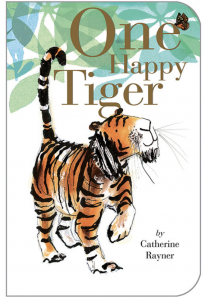Young Children = Natural Mathematicians
Young children, even infants and toddlers, are natural mathematicians and scientists. When new infants gaze into faces of the people in their day-to day lives, they are already observers. When toddlers want more blueberries and utter, “More!” and then have eaten all of their fruit and declare, “All gone!”—they are already comparing and understanding the mathematical concepts of “more” and “less”. As they build with blocks, they understand the concepts of ‘taller’ and ‘shorter’ and can compare the two.
Young children are keen observers and while observing, new ideas pop into their minds. Often the new idea is something they want to figure out. When they have the opportunity to play and build with hands-on materials such as blocks, the blocks can serve as tools that can help them figure out how to solve a problem—a math problem.
Likewise research has shown that early math promotes early literacy and language development. This happens because while playing, many young children tell about what they observe and create. All adults have to do is observe infants, toddlers, and young children as they play, talk and show us that in fact, they are natural mathematicians.
This is why it matters that they have a multitude of opportunities to play with hands-on materials. Playing with, manipulating and building with blocks give young children endless possibilities to discover and problem-solve throughout their early years so they can continue to be mathematical thinkers throughout their lives.
Books allow readers to ‘play’ with math too. Math is more than numbers, formulas and equations! The Mathical Book Prize is an annual award for fiction and nonfiction books that inspire children of all ages to see math in the world around them. Mathical titles are promoted nationally among librarians, K-12 teachers, parents, mathematicians, early childhood educators and science museums.
This blog post will be the first of many highlighting quality mathematical literature for children. The books featured in this post will be for younger children (ages 2 – 6). Future blog posts will feature literature for elementary, middle school and high school students.
A poster of winning and honor books for Grades K – 2 can be accessed at https:// www.mathicalbooks.org/wp-content/uploads/2020/03/ Mathical_K-2_2015-2020_WEB.pdf
Do you have a book to add to the list? Let us know!
——————————————————————————————————
Seven Spectacular Math Books for Young Children
 Have you Seen My Dragon? by Stephen Light
Have you Seen My Dragon? by Stephen Light
(Gr Pre-K – 2) A child narrator searches high and low for his pet in this romping counting book. Children will enjoy spotting the roving dragon amid a detailed, pen-and-ink cityscape. They will also practice counting through a set of objects featured in spot color on each spread: two hot dogs, five water towers, 12 pigeons, and so on — up to the 20 lanterns in a final scene where the child and dragon are reunited.
Sheep Won’t Sleep: Counting by 2’s, 5’s,10’ s by Nina Cuneo (Gr K – 2)
s by Nina Cuneo (Gr K – 2)
Clarrisa tries all the usual tricks to fall asleep, including counting sheep. When that fails, the sheep suggest counting alpacas, in pairs. When that also fails, the alpacas suggest counting llamas by fives. As the pattern continues, Clarrisa’s room fills up with woolly animals in bright colors.
One Fox: A Counting Book Thriller by Kate Read (Gr Pre-K – 1)
One hungry fox with two sly eyes is on the prowl…three plump hens had better watch out! Rich and colorful illustrations plunge the reader into a dramatic and exciting sto ry set in a moonlit farmyard. With something different to count on each page, learning to count from one to ten has never been so thrilling!
ry set in a moonlit farmyard. With something different to count on each page, learning to count from one to ten has never been so thrilling!
This surprisingly simple counting book with a gripping tale, great for early education and read-alouds, has a hugely satisfying ending that’s sure to delight!
Hippos Go Berserk by Sandra Boynton (Grades Pre-K -1) 
All through the hippo night,
Hippos play with great delight.
But at the hippo break of day,
The hippos all must go away.
Hilarious hippos make a party out of counting in this Sandra Boynton classic.
 Count on Me by Miguel Tanco (Grades Pre-K – 2)
Count on Me by Miguel Tanco (Grades Pre-K – 2)
Everyone has a passion. For some, it’s music. For others, it’s art. For our heroine, it’s math. When she looks around the world, she sees math in all the beautiful things: the concentric circles a stone makes in a lake, the curve of a slide, the geometric shapes in the playground. Others don’t understand her passion, but she doesn’t mind. There are infinite ways to see the world. And through math is one of them.
One Happy Tiger by Catherine Rayner (Grades Pre-K – 2)
One tiger sits all alone, feeling sad. Then he finds two bright bugs, three colorful birds, and more, and soon he isn’t sad anymore. Children will learn to count from 1 to 10 as they travel with the tiger to each new adventure in this beautiful book of friendship.
 Is 2 A Lot?: An Adventure with Numbers by Annie Watson (Grades Pre-K – 2)
Is 2 A Lot?: An Adventure with Numbers by Annie Watson (Grades Pre-K – 2)
Two is not a lot of pennies, but it is a lot of smelly skunks. Ten is not a lot of popcorn pieces, but it is a lot of chomping dinosaurs. One thousand is not a lot of grains of sand, but it is a lot of hot air balloons!


